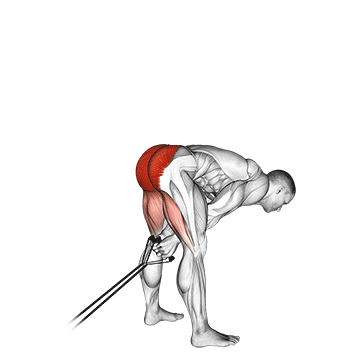The Band Pull Through exercise is a resistance exercise that targets the muscles in the lower back, glutes, and hamstrings. It is commonly used in strength training programs to improve hip and back strength, as well as improve overall conditioning and stability.
How to perform
To perform the Band Pull Through exercise, follow these step-by-step instructions:1. Start by attaching a resistance band to a low anchor point, such as a sturdy pole or a squat rack.
2. Stand facing away from the anchor point with your feet shoulder-width apart and the band looped around your waist.
3. Hinge at your hips and slightly bend your knees to lower your body forward, keeping your back straight and chest up.
4. Grab the resistance band between your legs with both hands, palms facing each other.
5. Engage your core and glutes, and exhale as you drive your hips forward and extend your hips until you are standing upright.
6. Squeeze your glutes at the top of the movement, making sure to keep tension on the band throughout the exercise.
7. Slowly return to the starting position by hinging at the hips and bending your knees, maintaining control over the movement.
8. Perform the desired number of repetitions, aiming for 3-4 sets of 10-15 reps.
Remember to always use proper form and technique when performing the Band Pull Through exercise to prevent injury and get the most out of the exercise. Adjust the resistance band tension as needed to suit your fitness level and goals.
Equipment required
Band
Band equipment consists of elastic bands or tubes that provide resistance during exercises. They are commonly used to strengthen and tone muscles, improve flexibility, and increase range of motion. Bands are versatile and can be used for a variety of exercises targeting different muscle groups, making them suitable for strength training, rehabilitation, and physical therapy. The resistance levels can be adjusted based on the tension of the band, allowing for progressive overload and customization for individual fitness levels.


